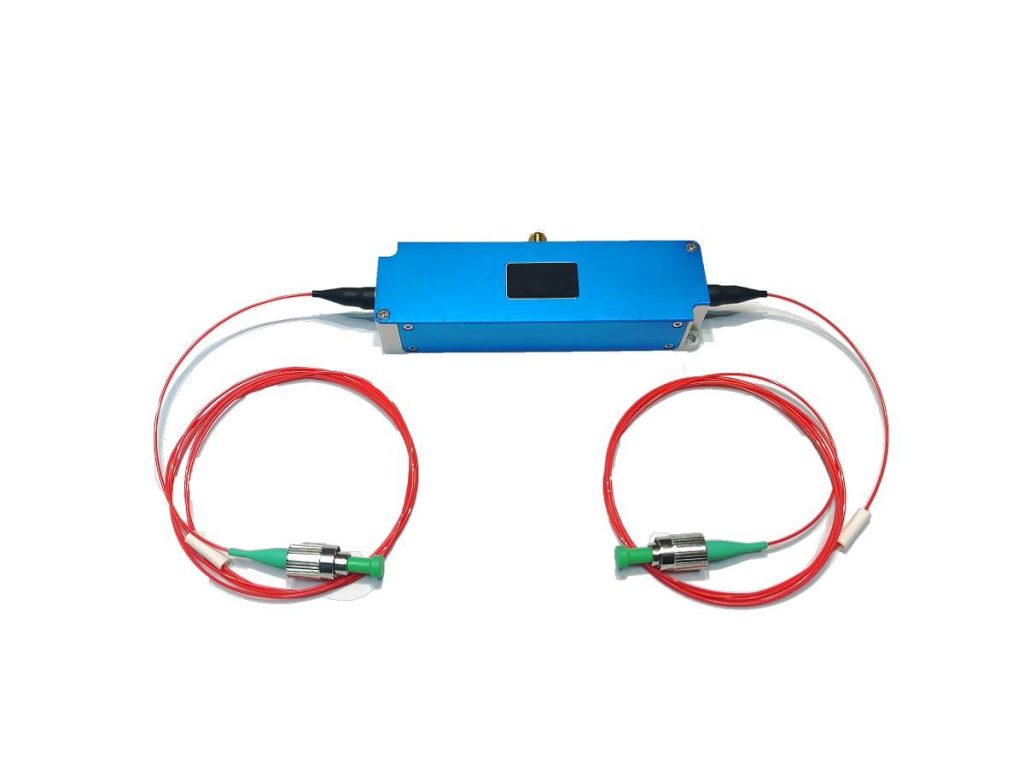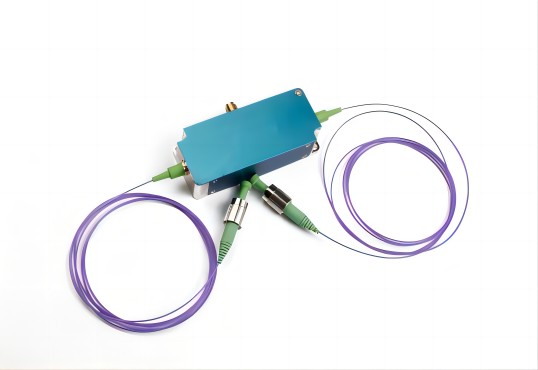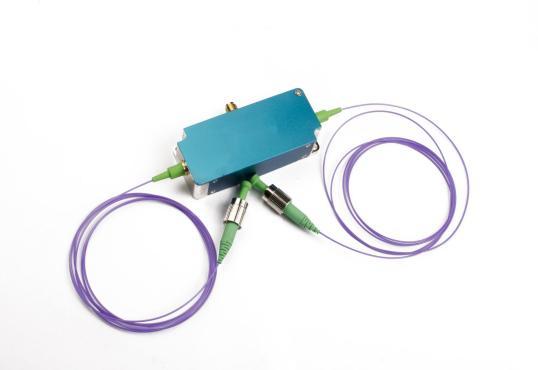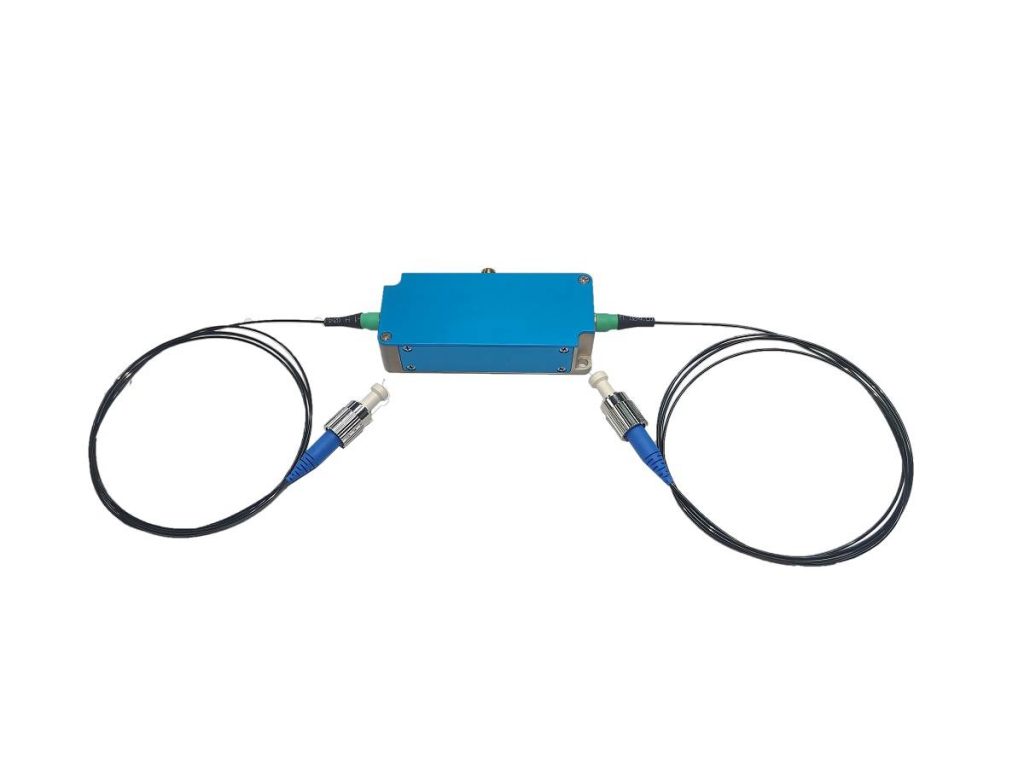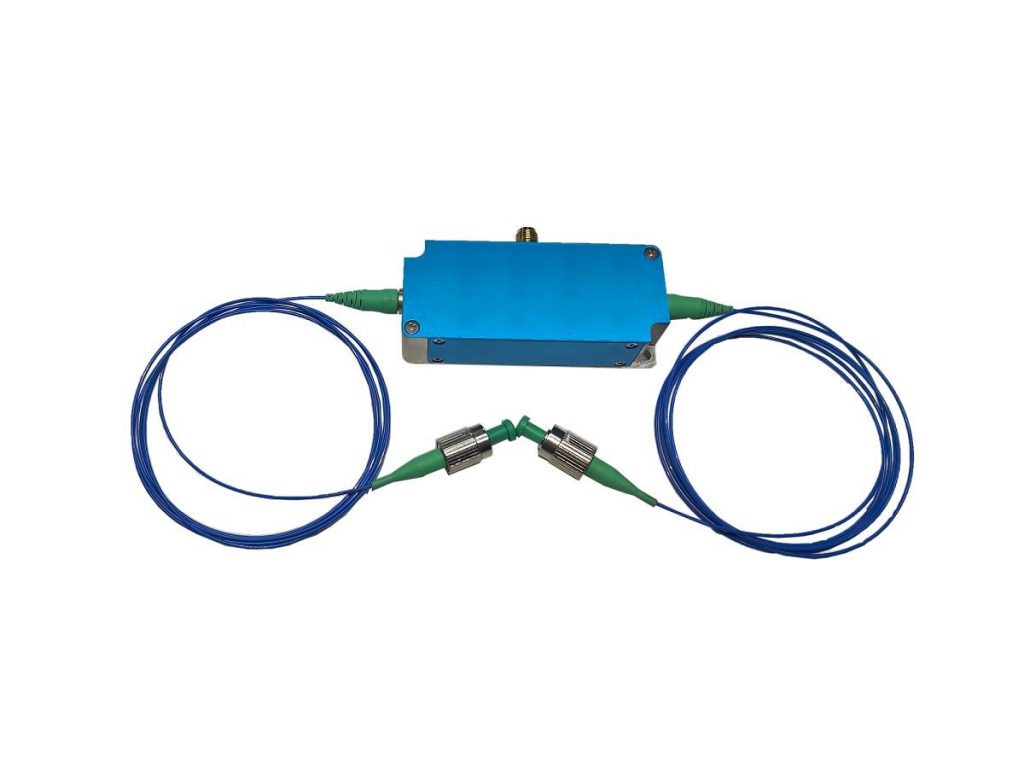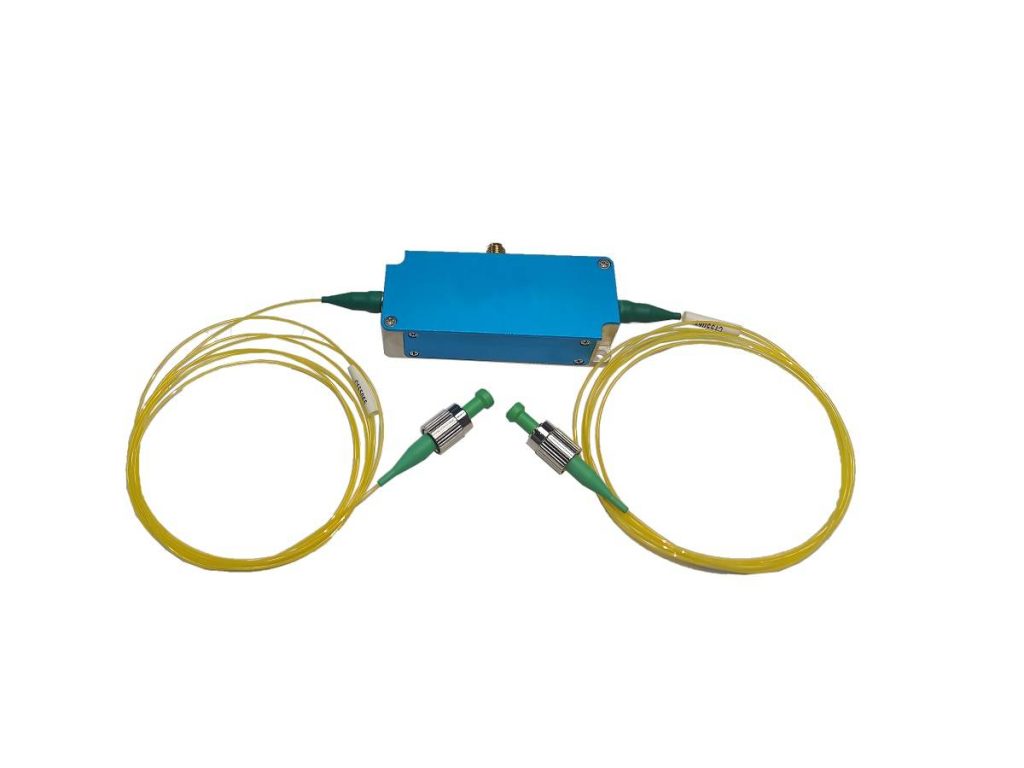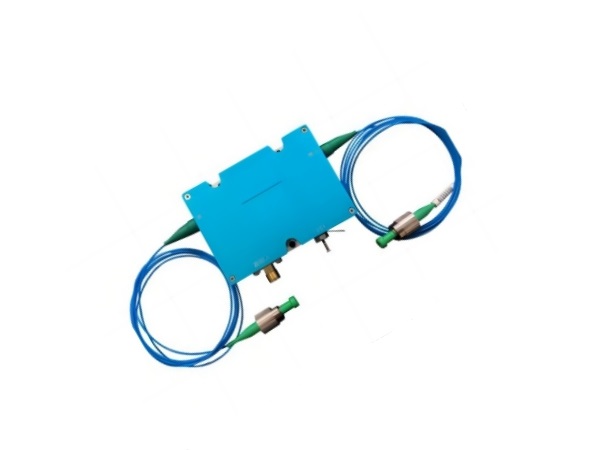How to Improve Modulation Efficiency in AOM Optics
In the field of laser beam control and laser modulation, acousto-optic modulators (AOM optics) play a very crucial role. Their ability to modulate light using acoustic waves makes them indispensable in scientific, industrial, and medical technology. Modulation efficiency is one such critical performance criterion in such systems—a criterion that measures how efficiently an AOM can convert electrical RF power into variation in optical intensity. In this article, we’ll explore what modulation efficiency means in AOM optics, what affects it, and how to optimize it for peak performance.
What Is Modulation Efficiency in AOM Optics?

AOM optics modulation efficiency is a quantification of how effectively an acousto-optic modulator is able to convert input radio frequency (RF) power into a modulated optical signal. More precisely, it is the relation of optical power actually diffracted into the desired output order—usually the first order—to the overall incident laser power. Higher modulation efficiency translates to more of the laser beam being effectively controlled or deflected, a necessity in precision applications like laser modulation, beam steering, and Q-switching.
This efficiency is based on a number of parameters, including AOM crystal characteristics, input laser wavelength, RF frequency used, and how well the optical-acoustic waves are aligned. Optimizing modulation efficiency in AOM optics ensures stronger signal output, system performance, and minimizes energy loss. In high-speed or high-accuracy applications, even small efficiency enhancements can mean enormous differences in results.
Key Factors Influencing AOM Optics Modulation Efficiency
Several related parameters affect the efficiency with which AOM optics can convert radio-frequency (RF) drive power to controlled light modulation. Learning what they are is step one to optimizing your acousto-optic modulator’s performance:
1.Crystal Material and Photoelastic Coefficient
The photoelastic coefficient of the AOM crystal defines the acoustic waves’ effect on its refractive index. Standardly utilized materials include tellurium dioxide (TeO₂), quartz, and fused silica. TeO₂ offers high visible wavelength diffraction efficiency, and quartz has greater bandwidth and higher thermal stability. Opt for a crystal having a high photoelastic coefficient for your laser wavelength in order to achieve the strongest interaction and highest diffraction efficiency.
2.Interaction Length and Acoustic Beam Profile
Modulation efficiency scales with the length over which the light and acoustic wave overlap. A longer interaction length generally increases diffraction, but only if the acoustic wave remains uniform. The acoustic beam’s spatial profile—shaped by the transducer design—must match the laser beam’s cross section to maintain constant acoustic intensity across the optical aperture.
3.RF Drive Power and Frequency
The RF power used must be sufficient to generate the high acoustic waves without heating up the crystal to any useful temperature. Thermal lensing and acoustic nonlinearity result from over-driving. The frequency of RF also has to be tuned to your AOM’s Bragg condition for your wavelength. Other than the optimal frequency, operating reduces the diffraction angle and efficiency.
4.Laser Beam Characteristics
Beam diameter: mode quality (M²), and polarization all affect efficiency. Smooth diffraction is offered by a Gaussian beam whose waist diameter equals the acoustic aperture. Polarization must be in coincidence with the acoustic axis of the crystal—usually the extraordinary axis in TeO₂—to optimize the photoelastic interaction.
5.Optical Alignment and Temperature Control
Precise angular positioning is required to reach the Bragg angle for maximum first-order diffraction. Alignment of as little as a few milliradians will cause efficiency to drop appreciably. Temperature variation also alters the acoustic velocity and refractive index of the crystal, so the inclusion of a thermoelectric cooler (TEC) or temperature-controlled mount can provide stable, high modulation efficiency with time.
By judiciously choosing crystal materials, beam profile matching, RF drive parameter optimization, and maintaining stringent alignment and thermal control, you can substantially improve your AOM optics system’s modulation efficiency.

Practical Tips to Improve AOM Modulation Efficiency
Optimizing modulation efficiency in AOM optics doesn’t always require elaborate upgrades—a number of targeted adjustments can radically improve performance. The following four are some of the most important practical tips:
1. Optimize RF Drive Power and Frequency
Ensure the RF driver is set at the optimal frequency and power for your AOM. Insufficient power causes low diffraction, and excessive power can overheat the crystal or cause acoustic distortions. The RF frequency needs to be tuned to the AOM’s design parameters—typically based on the Bragg condition—for maximum efficiency.
2. Accurately Align the Laser Beam
Good beam alignment with respect to the AOM crystal is crucial. The laser has to enter the modulator at the correct Bragg angle for efficient diffraction. Minor angular misalignments will drastically reduce first-order output power, and thus precise adjustment with the help of alignment tools is required.
3. Match Beam Size to the Acoustic Aperture
The diameter of the laser beam should be very near the acoustic beam profile inside the AOM. When the beam is too broad, it may be clipped, and when too narrow, it will not have full interaction with the acoustic wave, both of which will result in reduced efficiency.
4. Stabilize Crystal Temperature
Temperature fluctuations affect the acoustic velocity and refractive index of the crystal, which changes the conditions of diffraction. Use a thermoelectric cooler (TEC) or temperature-controlled mount to supply stable operating conditions and ensure stable, high-efficiency operation.
By optimizing these four areas—RF optimization, meticulous alignment, beam shaping, and thermal stability—you can significantly improve your AOM optics system’s modulation efficiency and benefit from more dependable, high-performance operation.
Common Mistakes That Reduce Modulation Efficiency
Improving modulation efficiency in AOM optics doesn’t always require advanced upgrades—a few strategically placed adjustments can dramatically enhance performance. The following are four of the most useful practical tips:
1. Optimize RF Drive Power and Frequency
Ensure that the RF driver is at the optimal frequency and power level for your AOM. Insufficient power leads to low diffraction efficiency, but excessive power can lead to overheating of the crystal or acoustic distortions. It is also critical to set the RF frequency to the AOM’s design parameters—typically determined by the Bragg condition—for maximum efficiency.
2. Match Beam Size to the Acoustic Aperture
The diameter of the laser beam should be very close to that of the acoustic beam profile inside the AOM. A beam that is too wide will be clipped, and a beam that is too narrow will not interact completely with the acoustic wave, both resulting in reduced efficiency.
3. Stabilize Crystal Temperature
Temperature fluctuations affect the acoustic velocity and refractive index of the crystal, which can shift the diffraction conditions off-center. Use a thermoelectric cooler (TEC) or temperature-controlled mount to supply stable operating conditions and ensure stable, high-efficiency operation.
4. Carefully Align the Laser Beam
Proper beam alignment with respect to the AOM crystal is crucial. The laser has to enter the modulator at its correct Bragg angle for effective diffraction. Minor angular misalignments will dramatically reduce first-order output power, and hence fine adjustment with the help of alignment tools is required.
By optimizing these four areas—RF optimization, careful alignment, beam shaping, and thermal stability—you can significantly improve the modulation efficiency of your AOM optics system and achieve more reliable, high-performance operation.
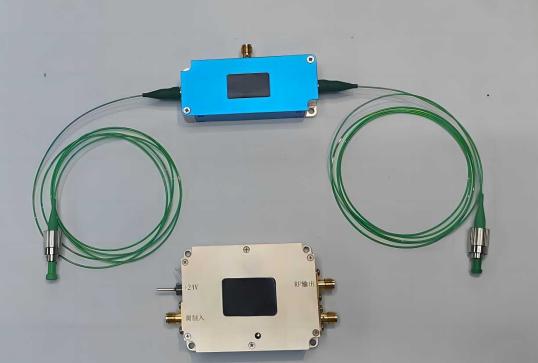
Advanced Optimization Techniques
Even veteran users neglect pitfalls that insidiously degrade an AOM’s performance. Prevent these mistakes to maintain your system at optimum efficiency:
- Impedance Mismatch in RF Circuitry: Omitting impedance matching between the RF amplifier and transducer causes reflected power and inefficient acoustic wave generation. Always employ a network analyzer or matching network to guarantee minimum return loss.
- Neglecting Acoustic Transducer Wear: Over time, adhesive bonds, gold contacts, or piezoelectric elements can break down, reducing acoustic coupling. Periodically inspect and, if necessary, replace the transducer assembly to maintain even sound-wave strength.
- Operating Outside Linear Range: Pushing the AOM into nonlinear acoustic regimes—by ramping RF power too quickly or using steep pulse edges—can produce harmonics and phase distortions. Use slow power ramps and pulse-shaping circuits to stay within the device’s linear response.
- Skipping Routine Calibration: Drift in RF power meters, temperature sensors, or beam profilers leads to erroneous setup conditions. Calibrate your measurement equipment on a regular basis to maintain your AOM optics parameters properly adjusted.
- Ignoring Back-Reflections: Uncontrolled back-reflected light will generate parasitic standing waves in the crystal, causing hot spots and inhomogeneous diffraction. Utilize optical isolators or wedged windows to minimize reflections re-entering the modulator.
By addressing these often-overlooked issues, you’ll preserve the modulation efficiency of your AOM system and avert performance degradation over time.
Maximizing modulation efficiency in AOM optics is a balance of setup, design, and calibration. Being aware of the performance-affecting factors and employing best practices—from alignment to thermal management—can imbue your system’s output and reliability with tremendous value. In research, telecommunications, or laser manufacturing, such optimizations ensure you get the most out of your AOM technology.

